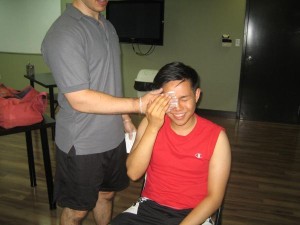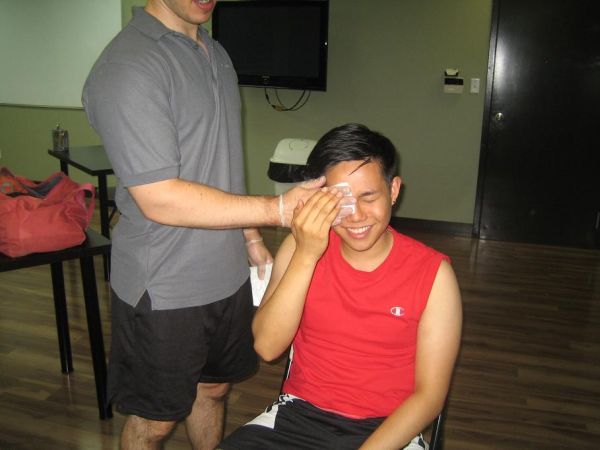A black eye involves bruising to the tissues beneath the skin surrounding the eye. It is typically brought about by damage to the face such as being punched or an accident particularly falls. Oftentimes, a black eye can also develop after a cosmetic surgery to the face such as a nose lift or face lift operation.
The area surrounding the eye becomes bluish or purplish since the small-sized blood vessels beneath the skin rupture and blood seeps out to the neighboring soft tissues. The skin might be sore and swollen and it is hard to completely open the eye. In addition, the vision is briefly blurred and there is also a headache.
Dealing with a black eye

A black eye is not considered serious and can be cared for at home if there are no indications of a severe injury.
After a few days, the swelling around the eye starts to settle down and the bruise turns brownish-yellow in appearance before eventually fading. Similar with any other bruise, a black eye might take a week or two to fully heal.
Self-care measures
There are ways to minimize the symptoms of a black eye. Initially, apply an ice pack to the skin surrounding the eye as soon as possible after the injury. You can utilize a bag of frozen peas wrapped with a tea towel. The cold numbs the pain and alleviates the swelling.
During the initial day, apply an ice pack to the eye for 15-20 minutes an hour every hour. Pain medications such as ibuprofen or paracetamol can be utilized to alleviate the pain.
A doctor should be consulted if the swelling or pain is severe or does not subside or the affected area is reddened, warm or drains pus.
When to go to an emergency department?
Bring an adult or child to the nearest healthcare facility right away for the following:
- Struck the head and ended up with 2 black eyes (this indicates a basilar skull fracture)
- Loses consciousness at the time of the blow to the head
- Double vision or vision loss
- There are other indications of a severe head injury such as a persistent headache, memory loss, seizures, drowsiness or vomiting.
- Inability to move the eye
- Something pierced the eye or embedded in it.
- The eye is damaged or there is blood in the eye
- Other indications of serious eye injury such an irregularly-shaped pupil, spots, pain upon exposure to bright light, halos or shadows in the field of vision
- Currently using blood-thinning medications such as aspirin or a bleeding disorder such as hemophilia
Quick Note / Disclaimer
The material posted on this page on black eye is for learning and educational purposes only. To learn to recognize and manage internal bleeding including a black eye, register for a first aid and CPR course with Toronto First Aid.

